|
Trace fossils
are very abundant in both the Abrigo Formation and the slightly
older Bright Angel Shale in northern Arizona. Nearly all trace
fossils found were in a micaceous glauconitic green shale, in
isolated beds found throughout the Abrigo, especially in its
lowest beds. The most commonly found types were from sediment
ingesting worms, with a number of disks and rings from stemmed
Echinoderms where they attached to the sediments. Also found
were the attachment depressions of solitary and colonial cnidarians.
Years of searching did not however reveal any trilobite tracks
or traces. This was surprising since there are so many trilobite
fossils in the Abrigo.
Most fossils are
in a single bed or plane and represent variations on Planolites,
or Paleophycus. Another surpise was that no Skolithos was found
either. This seems to indicate we are in a deeper water enviornment
rather than near shore like the Tapeats or Bolsa sandstones.
Click thumbnails
for larger view.
Type 1: Worm burrows
and trails
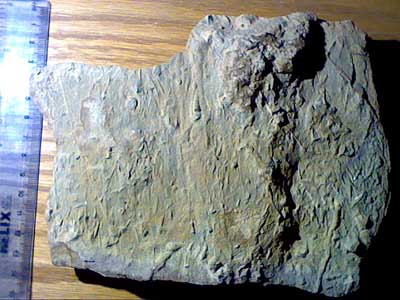
|
Many
current orientated traces are found in the Abrigo. While most
are obviously from infaunal animals, quite a few resemble tooling
marks and scrapes. |
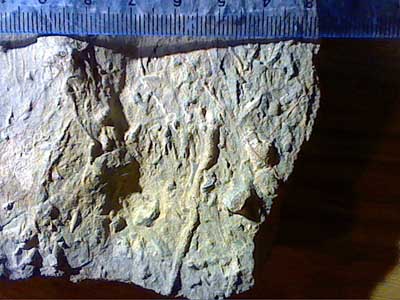
|
Paleophycus
like traces are so abundant in some layers, the rock seems to
constructed of them. |
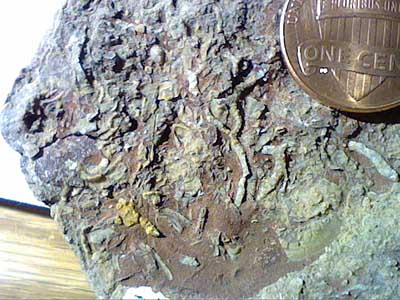
|
A
few branching burrows mixed with trilobite hash. |
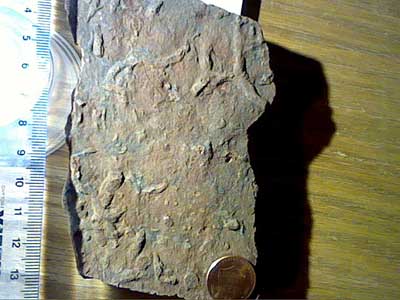
|
More
Paleophycus types. |
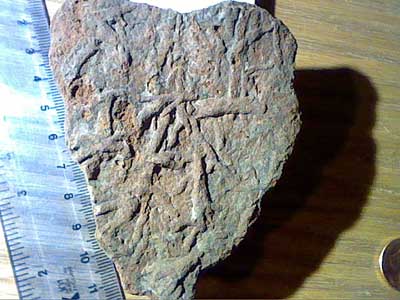
|
Layer
upon layer of burrows from worm like sediment ingesters plowing
through the sediment in search of food. |
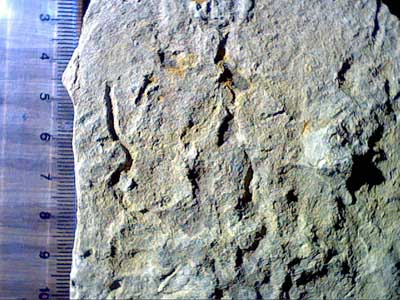
|
Non-descript
hollow tubes from bedding plane surface. |
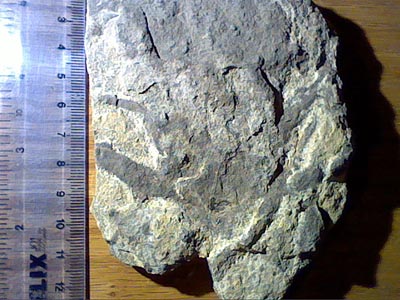
|
A
range of sizes seen here, in a bedding cross section. |
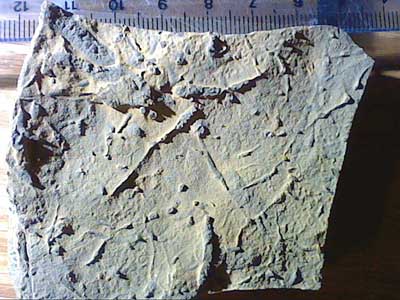
|
Many
beds seemed to contain fragmented sections of burrows. Here you
can see several lengths that have been broken up and separated. |
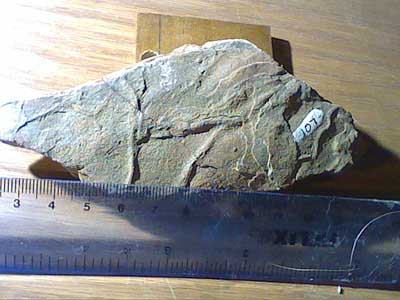
|
Some
beds were very sparse and were mostly undisturbed as seen here. |
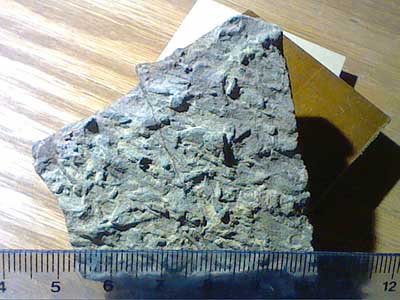
|
Broken
segments in a intermediate bedding plane. |
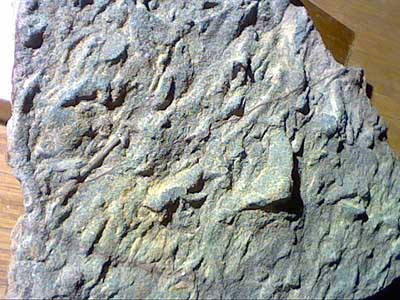
|
Close
up of above. |
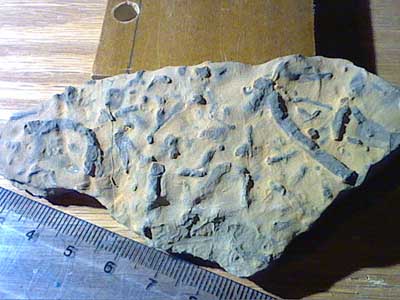
|
Infilled
burrows made of a slightly different composition than the surrounding
matrix. |
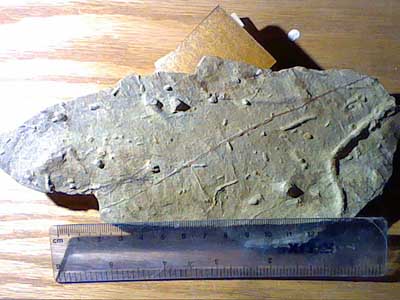
|
An
actual hard ground surface showing both sedimentary structures
and traces. |
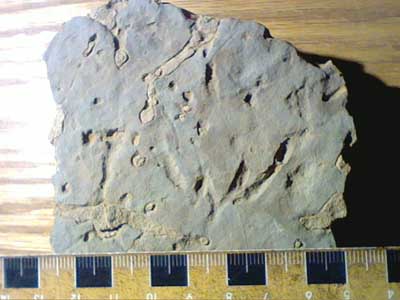
|
A
few localities we found cross sections from intermediate beds
in which the material inside the burrow was eroded out. |
Attachment Disks,
hold fast depressions
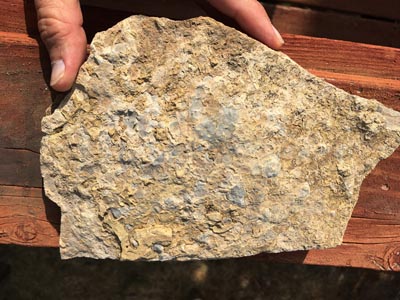
|
Bergauaria
- A prize find. dozens of Cnidarian (sea anemome) suction cup
marks can be seen clustered in a group on this former hardground. |
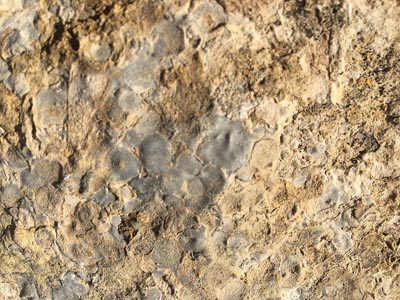
|
Bergauaria
, close up. Details include a central divot and a cup shaped
appearance. There is quite a size range too, indications of many
different age individuals in a colony. |
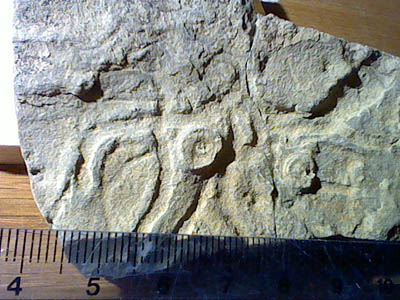
|
Probable
echinoderm hold fast marks. Most likely candidate is the primitive
crinoid Gogia. |
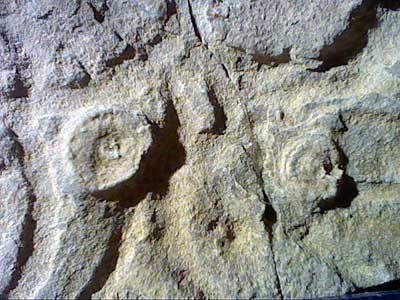
|
Close
up of holdfasts. |
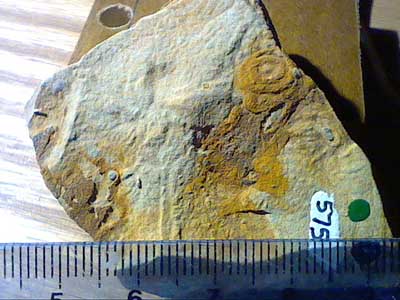
|
More
concentric type holdfast like traces. |
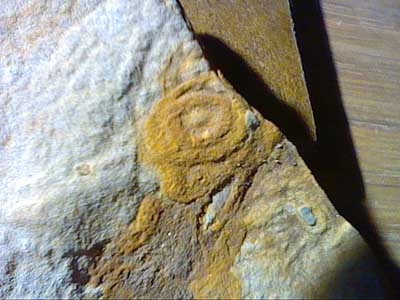
|
Close
up of holdfast trace. |
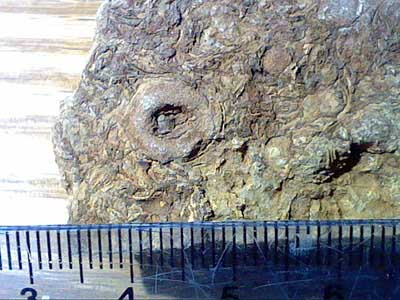
|
Another
type of circular trace which is most likely a holdfast impression.
One might argue that it is a basal disk of a Gogia Eocrinoid
as well. |
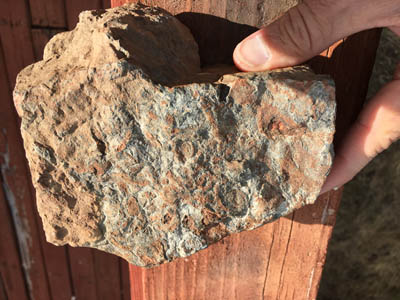
|
Another
large piece with many holdfast impressions. |
Sedimentary Structures
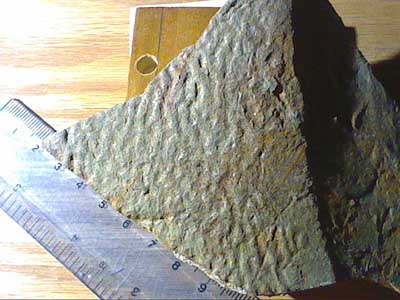
|
Commonly
found in the green shales were "Elephant Skin" texture.
This has been shown to be caused by an algal mat adhering to
the surface of the sediments and modifying its appearance. |
Problematica:
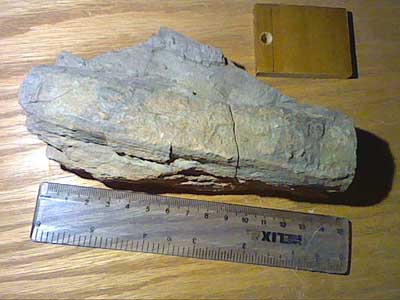
|
For
years, we have found these structures in both the Abrigo and
Bright Angel shale. They are like half a burrow - in fillings
of a channel like structure. They are always straight, U shaped
and never round. Often compressed to oval in profile. We tend
to think they are a type of sedimentary structure, like a mud
crack in fill or where the hardground was pulling apart. |
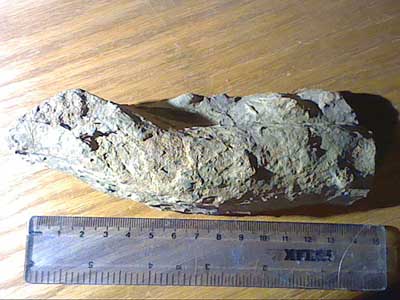
|
Another
example of the U shaped structures. This one is a bit curved.
They are never round, always D shaped. |
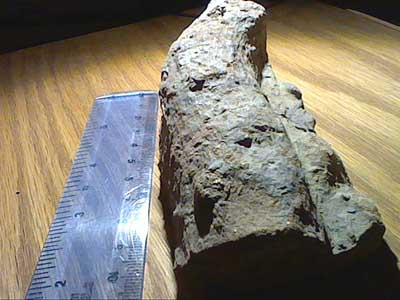
|
End
on view of large flattened burrow like or more channel like structures.
If they are indeed biogenic, it must have been quite a large
animal. |
|
